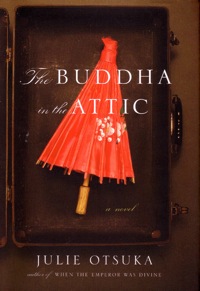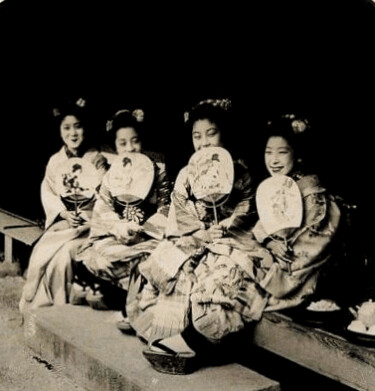 A finalist for the National Book Award this year, Julie Otsuka’s beautifully poetic second novel, The Buddha In The Attic, seems to question the very nature of narrative. Told in eight sections, the story shares the lives of a group of women who come to the United States as mail-order brides in the 1920’s. Marginalized by the dominant society, Otsuka further obscures their identities by both keeping them nameless, and, in a post-modern ploy, using the ‘we’ narrator. She then lists all the possible outcomes for the women. By doing so, she forces the reader to bear witness to their victimization again and again. To refuse to give the women names seems a continuation of their separateness, keeping them at a distance even from the reader:
A finalist for the National Book Award this year, Julie Otsuka’s beautifully poetic second novel, The Buddha In The Attic, seems to question the very nature of narrative. Told in eight sections, the story shares the lives of a group of women who come to the United States as mail-order brides in the 1920’s. Marginalized by the dominant society, Otsuka further obscures their identities by both keeping them nameless, and, in a post-modern ploy, using the ‘we’ narrator. She then lists all the possible outcomes for the women. By doing so, she forces the reader to bear witness to their victimization again and again. To refuse to give the women names seems a continuation of their separateness, keeping them at a distance even from the reader:
On the boat, we were mostly virgins. We had long black hair and flat wide feet and we were not very tall. Some of us had eaten nothing but rice gruel as young girls and had slightly bowed legs, and some of us were only fourteen years old and were still young girls ourselves. Some of us came from the city, and wore stylish city clothes, but many more of us came for the country and on the boat we wore the same old kimonos we’d been wearing for years – faded hand-me-downs form our sisters that had been patched and redyed many times.
As an introduction, this style of narration intrigues. As the mode for the entire book, will such artifice lose its charm? I began to long for one character, one story, one plot I could hold onto. Instead, I got a “list” novel. Lists have long been employed, and with great effect, in poetry. However, in a novel, merely listing what might happen to each ‘we’ in a narrative burdens the reader, and makes her complicit in the outcomes, no matter how beautifully the sentences string together.
Do we still need the Aristotelian notion of protagonist and antagonist? Must one create rising tension? Is a Greek chorus still drama? How far can the bounds of narrative be stretched and still provide satisfaction? Perhaps satisfaction is not Otsuka’s goal. The Buddha in the Attic puts forth a collective unconscious in which individuality, our particular stories, are rendered null and void. These stories wind down many paths, as though Otsuka has thrown down the gauntlet: will the reader follow a story that explores each road, including those not taken?
Extra
Click the streaming audio below to hear Julie Otsuka interviewed on WNYC’s The Leonard Lopate Show:






